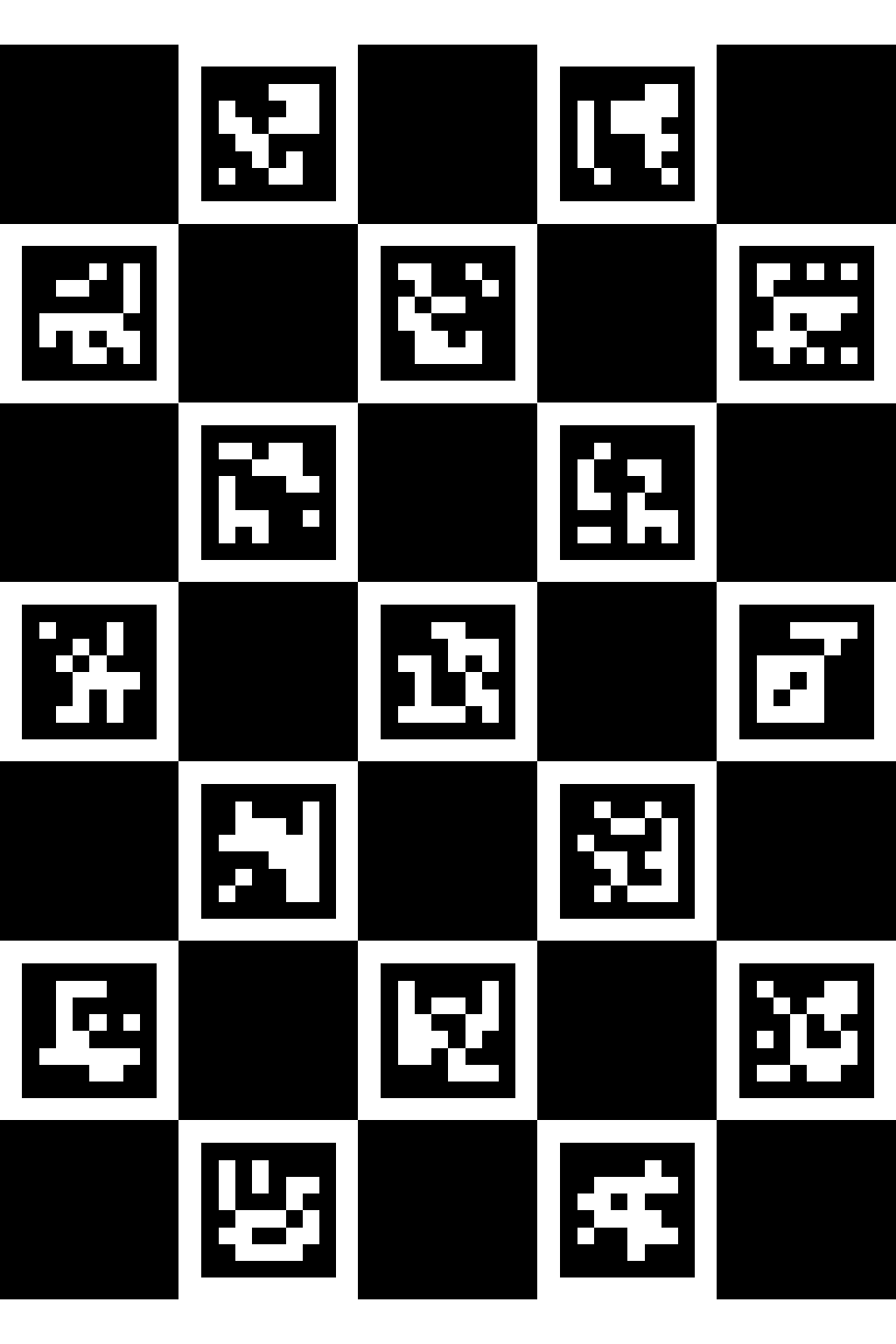Preparation
ChAruco is an integrated marker, which combines a chessboard with an aruco marker. The code is also very similar to the code in our previous blog aruco board.
Coding
The code can be found at OpenCV Examples. And the code in the first two subsections are exactly the same as what’s written in our previous blogs. We’ll neglect the first two subsections ever since.
First of all
Exactly the same as in previous blogs.
Secondly
Exactly the same as in previous blogs.
Thirdly
Dictionary aruco.DICT_6X6_1000 is integrated with a chessboard to construct a grid charuco board. The experimenting board is of size 5X7, which looks like:

1 | aruco_dict = aruco.Dictionary_get( aruco.DICT_6X6_1000 ) |
After having this aruco board marker printed, the edge lengths of this chessboard and aruco marker (displayed in the white cell of the chessboard) are to be measured and stored in two variables squareLength and markerLength, which are used to create the 5X7 grid board.
1 | squareLength = 40 # Here, our measurement unit is centimetre. |
Meanwhile, create aruco detector with default parameters.
1 | arucoParams = aruco.DetectorParameters_create() |
Finally
Now, let’s test on a video stream, a .mp4 file.
1 | videoFile = "charuco_board_57.mp4" |
Then, we calculate the camera posture frame by frame:
1 | while(True): |
The drawn axis is just the world coordinators and orientations estimated from the images taken by the testing camera.
At the end of the code, we release the video capture handle and destroy all opening windows.
1 | cap.release() # When everything done, release the capture |